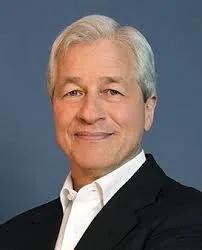 BrokerHiveX
BrokerHiveXBasic Information
Name: Jamie Dimon
Identity: Globally renowned banker | Chairman and CEO of JPMorgan Chase Expertise: Banking management, risk control, macroeconomic strategy
Jamie Dimon is one of the most influential bankers in the global financial industry. He has served as Chairman and CEO of JPMorgan Chase since 2005, successfully leading the bank through the 2008 global financial crisis and maintaining sustained growth in performance and asset size over the following decade. A Harvard Business School graduate with an MBA, he previously worked at American Express and Citigroup before becoming CEO of Bank One, which he spearheaded its merger with JPMorgan Chase in 2004.
Under his leadership, JPMorgan Chase became one of the world's most valuable banks, maintaining its leadership in investment banking, retail banking, asset management, and other areas. He is known for his pragmatic management style, keen insight into risks, and active voice on financial regulation and macroeconomic policy.
Representative achievements
Chairman and CEO of JPMorgan Chase (2005-present)
Led JPMorgan Chase through the 2008 financial crisis and its acquisitions of Bear Stearns and Washington Mutual
Listed on Time magazine's "100 Most Influential People in the World" list several times
Propelled JPMorgan Chase's assets to over US$4 trillion, firmly placing it at the forefront of the global banking industry
Actively contribute to global economic and policy discussions, including Federal Reserve policy, financial regulation, and economic growth strategies
Investment Philosophy
“Being prudent does not mean being conservative, but seizing opportunities while controlling risks.”
Jamie Dimon believes that the core mission of a bank is to create long-term, sustainable value for customers, shareholders, and society. He emphasized the importance of capital adequacy, liquidity management, and risk prevention and control. He also advocated for continuous innovation in the context of globalization and technological change to ensure that financial institutions remain competitive and resilient in a complex and volatile economic environment.
